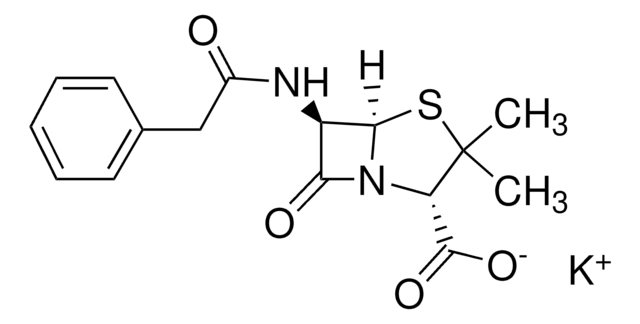47849
Acide benzoique
analytical standard
About This Item
Produits recommandés
Qualité
analytical standard
Densité de vapeur
4.21 (vs air)
Pression de vapeur
10 mmHg ( 132 °C)
CofA (certificat d'analyse)
current certificate can be downloaded
Température d'inflammation spontanée
1061 °F
Conditionnement
ampule of 1000 mg
Technique(s)
HPLC: suitable
gas chromatography (GC): suitable
Point d'ébullition
249 °C (lit.)
Pf
121-125 °C (lit.)
Solubilité
water: soluble (2.9 g/l at 25 °C)
Densité
1.32 g/cm3 at 20 °C
Application(s)
cleaning products
cosmetics
flavors and fragrances
food and beverages
personal care
Format
neat
Température de stockage
room temp
Chaîne SMILES
OC(=O)c1ccccc1
InChI
1S/C7H6O2/c8-7(9)6-4-2-1-3-5-6/h1-5H,(H,8,9)
Clé InChI
WPYMKLBDIGXBTP-UHFFFAOYSA-N
Vous recherchez des produits similaires ? Visite Guide de comparaison des produits
Description générale
Application
Mention d'avertissement
Danger
Mentions de danger
Conseils de prudence
Classification des risques
Eye Dam. 1 - Skin Irrit. 2 - STOT RE 1 Inhalation
Organes cibles
Lungs
Code de la classe de stockage
6.1C - Combustible acute toxic Cat.3 / toxic compounds or compounds which causing chronic effects
Classe de danger pour l'eau (WGK)
WGK 1
Point d'éclair (°F)
Not applicable
Point d'éclair (°C)
Not applicable
Faites votre choix parmi les versions les plus récentes :
Déjà en possession de ce produit ?
Retrouvez la documentation relative aux produits que vous avez récemment achetés dans la Bibliothèque de documents.
Les clients ont également consulté
Notre équipe de scientifiques dispose d'une expérience dans tous les secteurs de la recherche, notamment en sciences de la vie, science des matériaux, synthèse chimique, chromatographie, analyse et dans de nombreux autres domaines..
Contacter notre Service technique






